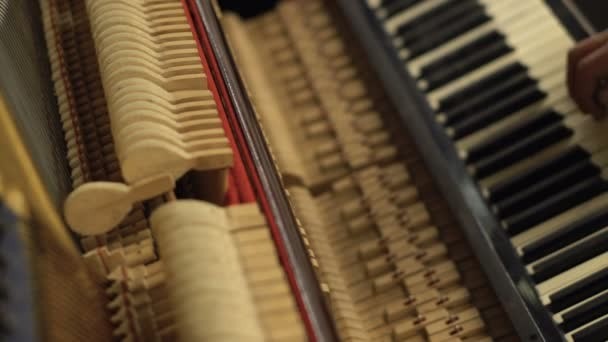Choosing a digital piano or a keyboard could be a thing that people really struggle with, especially for beginners. Perhaps you are not sure the difference between these two and which one suits your needs better.
For beginners, each one of them comes with great features and can help you to learn. But then, which one should you pick? Digital piano or keyboard?
The main difference between digital pianos and keyboards will be explained. Have a look at digital piano vs keyboard and then choose your favorite one!
Digital piano
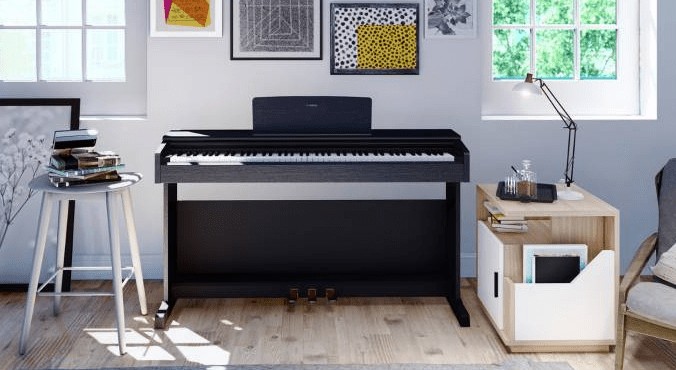
Basically, digital pianos are designed to be an alternative instrument to a real piano. It’s for the people who are on a tight budget to buy a real piano. Most of them come with a full set of 88 weighted keys, and some digital pianos have 76 keys.
Digital pianos tend to produce features, feelings, and appearances that are the same as an acoustic piano. They also offer lots of features that you can’t find on an acoustic piano.
A useful feature compared with acoustic pianos could be that digital pianos do not need tuning as they don’t have any mechanical part. Therefore, it’s convenient for all the players because you don’t need to spend any maintenance fee on it.
Keyboard
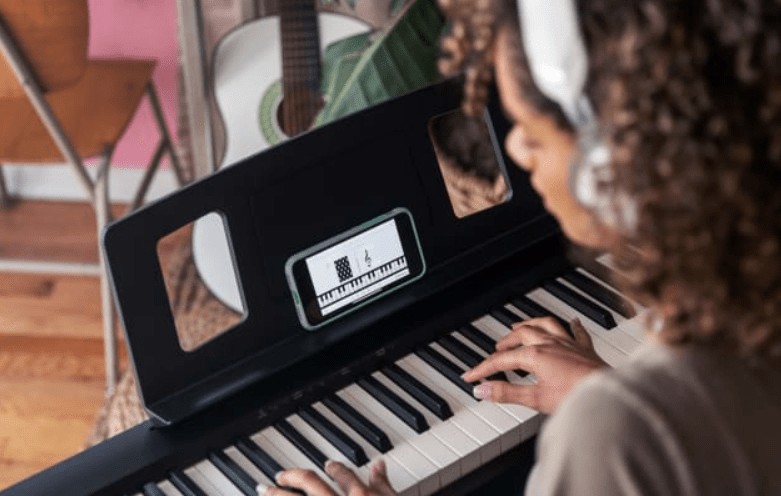
As for keyboards, it’s mainly designed to be a very portable model whereas not made to replicate a real piano, so the keys on keyboards are non-weighted as they need to keep lightweight. You can easily take it to travel with you or bring it if you need to commute a lot.
However, you may not expect that the feel, touch and the sound of keyboards can be close to a real piano. It trades off some functions and features of an acoustic piano to make it easier to play and operate. But keyboards also come up with loads of features that allow players to play and have fun.
Difference between digital pianos and keyboards
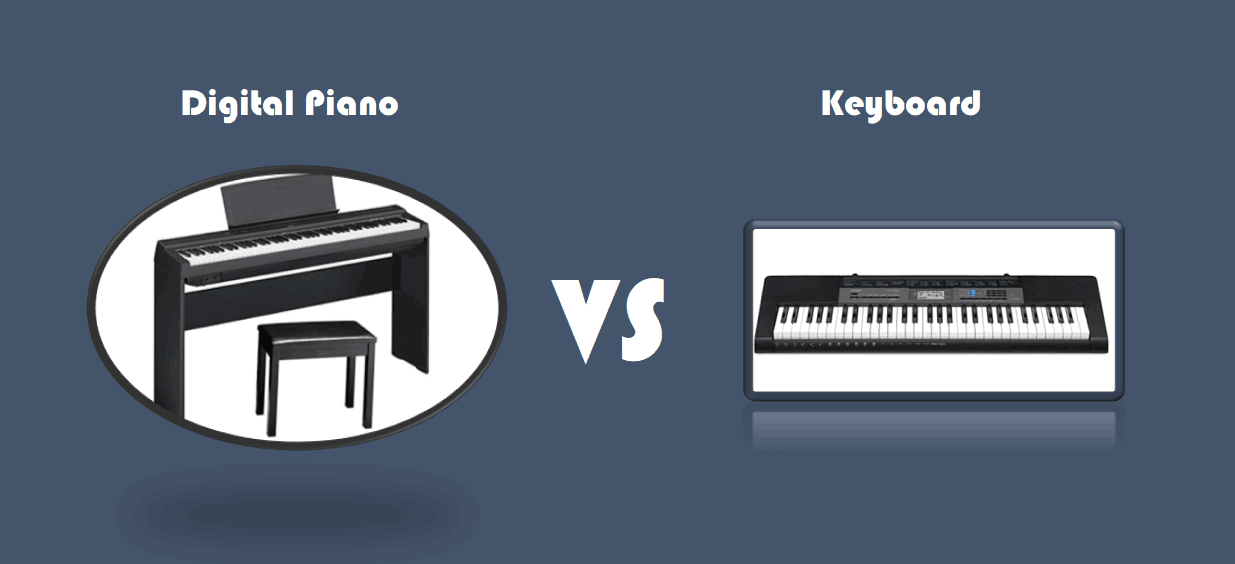
1. Price
Buying a digital piano is a cost-effective way if you’re working on a tight budget to buy an acoustic piano. The best affordable digital piano could be Alesis Recital digital piano with semi-weighted keys. But for those who want to have more proper practices, you should go for more expensive models such as Yamaha P-125 which offers better key action and sound quality.
On the other hand, keyboards are the most inexpensive instrument. The prices on some decent keyboards from famous manufacturers are even under $100, such as Casio CTK-2550 offering built-in lessons and other powerful functions. Additionally, keyboards allow you to learn music basics and feel the music. Generally, the expense of keyboards usually at the price range from 60 to 300 bucks (not including toy keyboards).
2. Keys
When it comes to keys, the differences between digital pianos and keyboards are mainly classified into the number of keys, the feel and the touch of the keys.
-
Number
A standard acoustic piano has 88 keys, including 55 white keys and 36 black keys. Most keyboards narrow down to 61 keys, 73 keys or 76 keys, which don’t affect you playing some casual music like pop music.
On the other hand, most digital pianos are equipped with 88 fully-sized keys and few digital pianos have 76 keys. If you want to play classical pieces and complex songs, a digital piano with 88 keys is your choice.
-
Weighted Keys & Touch-sensitive Keys
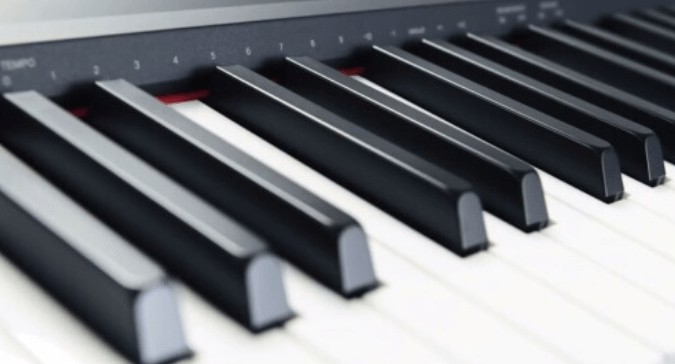
The biggest difference between digital pianos and keyboards are whether the keys are weighted or non-weighted and whether the keys are touch-sensitive or not.
The keys of keyboards are normally non-weighted because a keyboard needs to keep lightweight and portable. Part of keyboards has touch-sensitive keys, which allow you to decide how hard or soft you press the keys to get the sound you want and play tunes with dynamics.
Whereas a digital piano is designed to be alternative to a real piano, so basically all of the digital pianos come with weighted and touch-sensitive keys.
-
FAQ
Ideally, a digital piano or a keyboard with touch-sensitive keys is something you should consider if you’re working on a tight budget. If you are serious about learning piano and want to enhance your finger technique, get a digital piano with both weighted and touch-sensitive keys.
3. Sound
The sound quality of a digital piano is designed to emulate real pianos, along with built-in speakers, the sound is often richer, more resonant and more spacious than keyboards.
Digital pianos often use high-end sound engines to recreate the sound of a grand piano. For example, Yamaha p71 uses Advanced Wave Memory sampling to record the sound of an acoustic piano. Yamaha p125 uses the greater version of the sound engine (Pure CF Sound Engine) to recreate the sound of the Yamaha CFIIIS, which is a concert grand piano. For beginners, a digital piano with realistic sound can help you to be a sensitive musician.
On the contrary, the sound quality of keyboards is not as high-quality as digital pianos. Most of the keyboards are in tune well but less realistic. It doesn’t mean keyboards aren’t pleasant instruments as they come with impressive features in learning and composing.
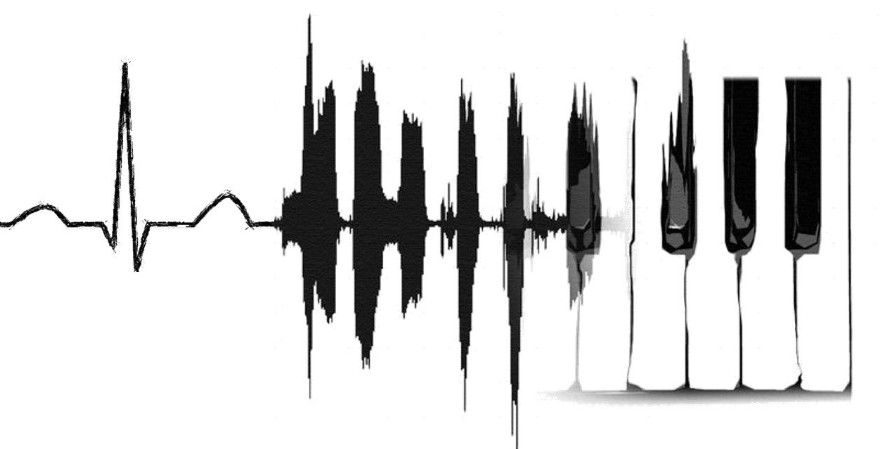
4. Portability
Keyboards are designed to be portable and compact for you to take it to gigs or travel. The weight of keyboards usually goes from 7 pounds to 15 pounds.
If home space and weight are not one of your considerations, then it’s good to go for digital pianos.
Luckily, some digital pianos are designed to be the best portable keyboards such as Yamaha p71 (25 pounds) and Roland fp10 (20 pounds). If you want to enjoy the features of digital pianos while you do not have enough space, consider these two!
5. Educational functionality
It’s a great thing that keyboards offer for beginners. Keyboards usually come with many learning aids, including built-in lessons and learning apps which you can learn how to play your favorite songs and music basics. Also, you can learn figure placement and notes on the staff on the LCD display. It’s the choice that fits for you if you’re an absolute beginner.
Most digital pianos do not have an LCD display because mostly a digital piano focuses on its traditional features, such as sound quality, key action and other tech features instead of extras. But surely if you need them, you can buy lessons online.
6. Voice & Rhythms
The number of voices and rhythms range from 5 to hundreds based on the piano model.
Normally, keyboards have way more voices and rhythms compared with digital pianos. It’s great for the players in terms of composing. Along with its portable design, when the inspiration strikes, you can just put it wherever you want and create your tunes by using different voices and rhythms. Plus, you can explore different instrument combinations as well. It gives you a huge variety of musical exploration.
Digital pianos often come with few voices. However, some of them are designed to be a mix of digital pianos and keyboards (aka hybrid piano). Hundreds of voices and rhythm are available in this kind of piano, such as Yamaha DGX-660 which comes with 554 voices. But unsurprisingly, the prices on this type are higher than the others. So, purchase your favorite one depending on your budget.
Conclusion
Generally, keyboards are satisfactory for casual players, and if you’re looking for an instrument to play for fun, learn music basics and create tunes.
Digital pianos are an excellent option for both beginners to advanced players who want to practice piano skills seriously and want to be able to play on an acoustic piano in the future.
If you’re a beginner looking for a digital piano or a keyboard to learn on and practice, check the list of Top 10 Best Keyboards for Beginners or Top 8 Best Digital Pianos for Beginners.

